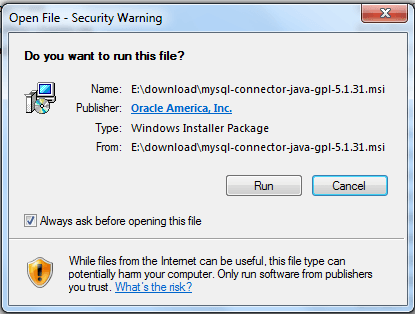


The domain objects (and their relationships to the Cluster tables) are defined by annotated interfaces (as shown in the right-hand side of Figure 2. Domain Object: Objects representing the data from a table.Session: There is one instance per user (per Cluster, per JVM) and represents a Cluster connection.The configuration details for the ClusterJ instance are defined in the Configuration properties which is an artifact associated with the SessionFactory. The SessionFactory object is used by the application to get hold of sessions. SessionFactory: There is one instance per MySQL Cluster instance for each Java Virtual Machine (JVM). By default, the table name will match the interface name and the column names match the property names but this can be overridden using annotations. This is achieved by annotating interfaces representing the Java objects where each persistent interface is mapped to a table and each property in that interface to a column. The purpose of ClusterJ is to provide a mapping from the table-oriented view of the data stored in MySQL Cluster to the Java objects used by the application. Domain objects are mapped to database tables.Domain objects are separate from business logic.It uses the Domain Object Model DataMapper pattern:

It is also designed to be easy for Java developers to use and is “in the style of” Hibernate/Java Data Objects (JDO) and JPA. It is designed to provide a high performance method for Java applications to store and access data in a MySQL Cluster database. Generally, one cannot work with a MySQL database inside a Java app without it.ClusterJ is part of the MySQL Cluster Connector for Java which is currently in beta as part of MySQL Cluster 7.1. MySQL Connector/J is not difficult to configure and facilitates the connection between Java-based applications and MySQL databases. Developers can create connection pools and JDBC data resources to use for their Java application.
MYSQL CONNECTOR FOR JAVA DRIVER
MySQL Connector/J enables Java-based applications that work with MySQL databases to establish the connection and run queries against the database, call stored procedures, manage input and output parameters, extracting and retrieving data from the database columns, and the list of scenarios does not end here.Īdditionally, the JDBC driver can be used with Tomcat, JBoss, Spring, GlassFish or other similar servers.

It is particularly useful for database editing tools and viewers. Thanks to MySQL Connector/J, Java-based applications can easily connect to a MySQL server instance and retrieve information regarding containing tables and entries. It does not rely on the MySQL client libraries. The connector uses a JDBC driver for retrieving information from the database tables and for other transactions. The driver fully supports the MySQL database functionality and enables other applications to connect to the database. MySQL Connector/J is a database driver designed to help developers access the MySQL databases from the applications created with Java.


 0 kommentar(er)
0 kommentar(er)
